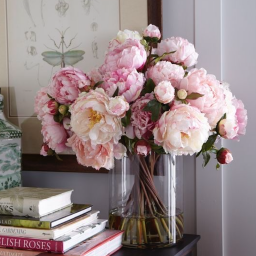Do’s & Don’ts of Mulching

Mulch is one of the best things you can do for your landscape. Mulch has many benefits throughout the year. Mulching the soil in flower, shrub and veg beds suppresses weeds, holds in moisture, looks smart and can help to feed plants as it breaks down in the long term. But making mistakes when mulching can keep your soil from reaping benefits such as conserving moisture, suppressing weeds, reducing erosion and decreasing water runoff.
Compost, grass and straw break down fairly quickly (within six months) returning nutrients to the soil – which is a good thing, but they’ll need replacing or topping up every year. Wood and bark chippings take around four years to decompose so they’re great for shrub borders. All mulches bring a decorative uniformity to garden beds. Homemade garden compost looks good and works well anywhere, but is unlikely to be entirely weed free so wherever you use it you’ll still need to patrol with the hoe.

How to apply different mulches
Mulch should cover bare soil, but never plants. It should be applied when the soil has warmed up from spring sunshine and is deeply moist from recent rain, and you should weed the area thoroughly before mulching, and feed any plants that require fertilizer.
Slow-to-decompose bark and wood chip mulches last well, but when they start to break down they should be raked off the soil and composted before a layer of fresh bark or wood chips are added. Simply piling more on top will increase the depth of soil around plants – particularly perennials and bulbs – and make it difficult to keep the material away from plant crowns and stems. Eventually you’ll smother them.
Mulching garden borders
1. Mulch should be applied when soil is warm and moist. Weed thoroughly and hoe the area to knock out slug eggs. Spread fertilizer around plants that need it.
2. Apply lightweight mulch over bare soil to about 2in deep, but keep it off the crowns of perennials and away from plant stems which can be damaged.
3. Heavier mulches of bark and woodchip are also fine spread 2in deep around shrubs and trees. Avoid piling too much on, and keep it off plant stems.
4. When bark or wood mulch starts to decompose, weeds will grow in it. Rake off and compost the old material before replacing it with fresh bark or wood chips.

Here are top tips on the dos and don’ts of mulch to make the most of your garden.
Do
1. Prepare the soil well, removing weeds, hoeing to aerate the soil and knock out slug eggs, and adding fertilizer around plants that need it.
2. Use well-made garden compost that’s reached a good temperature to kill weed seeds, or stick to weed-free products.
3. Use a thick layer of mulch. The general recommendation is about three to four inches of mulch in a planting bed, depending on how coarse the material is. This is the minimum depth for good weed control. Anything less will not keep the weeds at bay.
4. Use the right mulch for the job. For example, for vegetable gardens, you may want to use compost or organic straw for the mulch layer. Wood chips or bark are better for shrub beds.
4. Remove by hand all weeds that manage to penetrate the mulch layer. Do that as soon as you notice the weeds. Pulling those few weeds on a regular basis will prevent weeds from overtaking the mulched area.
Don't
1. Mulch when the soil is very cold or very dry as the soil covering can lock out warmth and moisture. Water thoroughly if necessary.
2. Use coarse bark or wood chip mulches on crowded annual or perennial borders as they are difficult to keep off delicate plant crowns and stems.
3. Keep piling new mulch material on top of old. Rake off and compost coarse bark mulches, work lightweight mulches into the soil with a hoe before topping up.
4. Don’t apply a layer that is too thin. If you don’t use a thick layer of mulch, light can still reach weed seeds and it won’t be an effective insulator against heat, cold and rain.
General advice: Year-round, mulch greatly reduces weed growth by keeping sunlight from reaching seeds, thus preventing them from germinating. This reduces the amount of work you have to do to keep landscape beds looking good. Mulch also feeds beneficial soil life, helps prevent the spread of soil-borne diseases, and adds an attractive feature to landscape beds.
Happy gardening!
